Overall Efficiency Improvement of a Dual Active Bridge Converter Based on Triple Phase-Shift Control
Abstract
:1. Introduction
2. DAB Converter Analysis
2.1. RMS Current and Average Power Formulation
- The magnetizing inductance is about 100 times larger than the leakage inductance ; therefore, the magnetizing current can be neglected.
- The turn ratio of the transformer guarantees that the module is always operated in boost mode.
- The switching cycle is about 100 times bigger than the commutation intervals; the commutation intervals are negligibly small in comparison to the switching cycle.
2.2. Semiconductor Power Losses
2.3. HFT Power Losses
3. DAB Control Optimization and Trajectories
Optimal Trajectory for Zone-3
4. DAB Control Structure
5. Experimental Results
5.1. Performance of the DAB with RMS Current Minimization
5.2. Performance of the DAB Converter with the Proposed Total PLM Scheme
6. Conclusions
Author Contributions
Funding
Institutional Review Board Statement
Informed Consent Statement
Data Availability Statement
Acknowledgments
Conflicts of Interest
References
- Doncker, R.W.D.; Divan, D.M.; Kheraluwala, M.H. A threephase soft-switched high power density DC/DC converter for high power applications. IEEE Trans. Ind. Appl. 1988, 1, 796–805. [Google Scholar]
- Shao, S.; Chen, H.; Wu, X.; Zhang, J.; Sheng, K. Circulating Current and ZVS-on of a Dual Active Bridge DC-DC Converter: A Review. IEEE Access 2019, 7, 50561–50572. [Google Scholar] [CrossRef]
- Xue, F.; Yu, R.; Huang, A.Q. A 98.3% efficient gan isolated bidirectional DC–DC converter for DC microgrid energy storage system applications. IEEE Trans. Ind. Electron. 2017, 64, 9094–9103. [Google Scholar] [CrossRef]
- Shiva, S.M.; Gorla, N.B.Y.; Das, P.; Panda, S.K. Tapchanging transformer based dual active bridge bi-directional DC-DC converter. In Proceedings of the 2015 9th International Conference on Power Electronics and ECCE Asia (ICPE-ECCE Asia), Seoul, Korea, 1–5 June 2015; pp. 2025–2030. [Google Scholar]
- Chan, Y.P.; Yaqoob, M.; Wong, C.S.; Loo, K.H. Realization of high-efficiency dual-active-bridge converter with reconfigurable multilevel modulation scheme. IEEE J. Emerg. Sel. Top. Power Electron. 2020, 8, 1178–1192. [Google Scholar] [CrossRef]
- Choi, W.; Rho, K.-M.; Cho, B.-H. Fundamental duty modulation of dual-active-bridge converter for wide-range operation. IEEE Trans. Power Electron. 2016, 31, 4048–4064. [Google Scholar] [CrossRef]
- Taylor, A.; Liu, G.; Bai, H.; Brown, A.; Johnson, P.M.; Ammond, M.M. Multiple-phase-shift control for a dual active bridge to secure zero-voltage switching and enhance light-load performance. IEEE Trans. Power Electron. 2018, 33, 4584–4588. [Google Scholar] [CrossRef]
- Karshenas, H.R.; Daneshpajooh, H.; Safaee, A.; Bakhshai, A.; Jain, P. Basic families of medium-power soft-switched isolated bidirectional DC-DC converters. In Proceedings of the 2011 2nd Power Electronics, Drive Systems and Technologies Conference, Tehran, Iran, 16–17 February 2011; pp. 92–97. [Google Scholar]
- Guidi, G.; Kawamura, A.; Sasaki, Y.; Imakubo, T. Dual active bridge modulation with complete zero voltage switching taking resonant transitions into account. In Proceedings of the 2011 14th European Conference on Power Electronicsand Applications, Birmingham, UK, 30 August–1 September 2011; pp. 1–10. [Google Scholar]
- Inoue, S.; Akagi, H. A bidirectional isolated dc-dc converter as a core circuit of the next-generation medium-voltage power conversion system. IEEE Trans. Power Electron. 2007, 22, 535–542. [Google Scholar] [CrossRef]
- Krismer, F.; Kolar, J.W. Accurate small-signal model for the digital control of an automotive bidirectional dual active bridge. IEEE Trans. Power Electron. 2009, 24, 2756–2768. [Google Scholar] [CrossRef]
- Oggier, G.G.; Garcia, G.O.; Oliva, A.R. Modulation strategy to operate the dual active bridge dc-dc converter under soft switching in the whole operating range. IEEE Trans. Power Electron. 2011, 26, 1228–1236. [Google Scholar] [CrossRef]
- Baiand, H.; Mi, C. Eliminate reactive power and increase system efficiency of isolated bidirectional dual-active-bridge dc–dc converters using novel dual-phase-shift control. IEEE Trans. Power Electron. 2008, 23, 2905–2914. [Google Scholar]
- Hou, N.; Song, W.; Zhu, Y.; Sun, X.; Li, W. Dynamic and static performance optimization of dual active bridge DC-DC converters. J. Mod. Syst. Clean Energy 2018, 6, 607–618. [Google Scholar] [CrossRef]
- Liu, B.; Davari, P.; Blaabjerg, F. An optimized hybrid modulation scheme for reducing conduction losses in dual active bridge converters. IEEE J. Emerg. Sel. Top. Power Electron. 2021, 9, 921–936. [Google Scholar] [CrossRef]
- Noroozi, N.; Emadi, A.; Narimani, M. Performance evaluation of modulation techniques in single-phase dual active bridge converters. IEEE Open J. Ind. Electron. Soc. 2021, 2, 410–427. [Google Scholar] [CrossRef]
- Oggier, G.G.; Garcia, G.O.; Oliva, A.R. Switching control strategy to minimize dual active bridge converter losses. IEEE Trans. Power Electron. 2009, 24, 1826–1838. [Google Scholar] [CrossRef]
- Wen, H.; Xiao, W.; Su, B. Nonactive power loss minimization in a bidirectional isolated DC–DC converter for distributed power systems. IEEE Trans. Ind. Electron. 2014, 61, 6822–6831. [Google Scholar] [CrossRef]
- Zhao, B.; Song, Q.; Liu, W. Efficiency characterization and optimization of isolated bidirectional DC–DC converter based on dual-phase-shift control for DC distribution application. IEEE Trans. Power Electron. 2013, 28, 1711–1727. [Google Scholar] [CrossRef]
- Wu, K.; de Silva, C.W.; Dunford, W.G. Stability analysis of isolated bidirectional dual active full-bridge dc-dc converter with triple phase-shift control. IEEE Trans. Power Electron. 2012, 27, 2007–2017. [Google Scholar] [CrossRef]
- Hou, N.; Song, W.; Wu, M. Minimum-current-stress scheme of dual active bridge DC–DC converter with unified phase-shift control. IEEE Trans. Power Electron. 2016, 31, 8552–8561. [Google Scholar] [CrossRef]
- Huang, J.; Wang, Y.; Li, Z.; Lei, W. Unified triple-phase-shift control to minimize current stress and achieve full soft-switching of isolated bidirectionalDC–DC converter. IEEE Trans. Ind. Electron. 2016, 63, 4169–4179. [Google Scholar] [CrossRef]
- Mou, D.; Luo, Q.; Wang, Z.; Li, J.; Wei, Y.; Shi, H.; Du, X. Optimal asymmetric duty modulation to minimize inductor peak-to-peak current for dualactive bridge DC–DC converter. IEEE Trans. Power Electron. 2021, 36, 4572–4584. [Google Scholar] [CrossRef]
- Hou, N.; Song, W.; Li, Y.; Zhu, Y.; Zhu, Y. A comprehensive optimization control of dual-active-bridge DC–DC converters based on unified-phase-shift and power-balancing scheme. IEEE Trans. Power Electron. 2019, 34, 826–839. [Google Scholar] [CrossRef]
- Sha, D.; Zhang, J.; Liu, K. Leakage inductor current peak optimization for dual-transformer current-fed dual active bridge DC–DC converter with wide inputand output voltage range. IEEE Trans. Power Electron. 2020, 35, 6012–6024. [Google Scholar] [CrossRef]
- Wu, F.; Feng, F.; Gooi, H.B. Cooperative triple-phase-shift controlfor isolated DAB DC–DC converter to improve current characteristics. IEEE Trans. Ind. Electron. 2019, 66, 7022–7031. [Google Scholar] [CrossRef]
- Hebala, O.M.; Aboushady, A.A.; Ahmed, K.H.; Abdelsalam, I. Generic closed-loop controller for power regulation in dual active bridge DC–DC converter with current stress minimization. IEEE Trans. Ind. Electron. 2019, 66, 4468–4478. [Google Scholar] [CrossRef]
- Shao, S.; Jiang, M.; Ye, W.; Li, Y.; Zhang, J.; Sheng, K. Optimal phase-shift control to minimize reactive power for a dual active bridge DC–DCconverter. IEEE Trans. Power Electron. 2019, 34, 10193–10205. [Google Scholar] [CrossRef]
- Das, D.; Basu, K. Optimal design of a dual-active-bridge DC–DC converter. IEEE Trans. Ind. Electron. 2021, 68, 12034–12045. [Google Scholar] [CrossRef]
- Hebala, O.M.; Aboushady, A.A.; Ahmed, K.H.; Abdelsalam, I.; Burgess, S.J. A new active power controller in dual active bridge DC–DC converter with a minimum-current-point-tracking technique. IEEE J. Emerg. Sel. Top. Power Electron. 2021, 9, 1328–1338. [Google Scholar] [CrossRef]
- Zhu, L.; Taylor, A.R.; Liu, G.; Bai, K. A multiple-phase-shiftcontrol for a sic-based EV charger to optimize the light-load efficiency, current stress, and power quality. IEEE J. Emerg. Sel. Top. Power Electron. 2018, 6, 2262–2272. [Google Scholar] [CrossRef]
- Bhattacharjee, A.K.; Batarseh, I. Optimum hybrid modulation for improve-ment of efficiency over wide operating range for triple-phase-shift dual-active-bridgeconverter. IEEE Trans. Power Electron. 2020, 35, 4804–4818. [Google Scholar] [CrossRef]
- Zhou, L.; Gao, Y.; Ma, H.; Krein, P.T. Wide-load range multiobjective efficiency optimization produces closed-form control solutions for dual active bridgeconverter. IEEE Trans. Power Electron. 2021, 36, 8612–8616. [Google Scholar] [CrossRef]
- Pistollato, S.; Zanatta, N.; Caldognetto, T.; Mattavelli, P. A low complexity algorithm for efficiency optimization of dual active bridge converters. IEEE Open J. Power Electron. 2021, 2, 18–32. [Google Scholar] [CrossRef]
- Tong, A.; Hang, L.; Li, G.; Jiang, X.; Gao, S. Modeling andanalysis of a dual-active-bridge-isolated bidirectional DC/DC converter to minimize RMS current with whole operating range. IEEE Trans. Power Electron. 2018, 33, 5302–5316. [Google Scholar] [CrossRef]
- Shen, X.; Ouyang, T.; Chen, Z.; Zhao, S.; Fang, J.; Zhang, Y. Randomized computation for the current stress policy design in the DAB converter. IEEE Control. Syst. Lett. 2021, 5, 863–868. [Google Scholar] [CrossRef]
- Tang, Y.; Hu, W.; Xiao, J.; Chen, Z.; Huang, Q.; Chen, Z.; Blaabjerg, F. Reinforcement learning based efficiency optimization scheme for the DAB DC–DC converter with triple-phase-shift modulation. IEEE Trans. Ind. Electron. 2021, 68, 7350–7361. [Google Scholar] [CrossRef]
- Tang, Y.; Hu, W.; Cao, D.; Hou, N.; Li, Y.; Chen, Z.; Blaab-jerg, F. Artificial intelligence-aided minimum reactive power control for the DAB converter based on harmonic analysis method. IEEE Trans. Power Electron. 2021, 36, 9704–9710. [Google Scholar] [CrossRef]
- Jean-Pierre, G.; Khayamy, M.; Altin, N.; Shafei, A.E.; Nasiri, A. A triple phase-shift based control method for RMS current minimization and power sharing control of input-series output-parallel dual active bridge converter. In Proceedings of the 2020 IEEE Transportation Electrification Conference & Expo (ITEC), Chicago, IL, USA, 23–26 June 2020; pp. 550–555. [Google Scholar] [CrossRef]
- Venkatachalam, K.; Sullivan, C.; Abdallah, T.; Tacca, H. Accurate prediction of ferrite core loss with nonsinusoidal waveforms using only Steinmetz parameters. In Proceedings of the IEEE Workshop on Computers in Power Electronics, Mayaguez, PR, USA, 3–4 June 2002; pp. 36–41. [Google Scholar]
- Jean-Pierre, G.; Altin, N.; Shafei, A.E.; Nasiri, A. Efficiency optimization of dual active bridge DC–DC converter with triple phase-shift control. In Proceedings of the 2020 IEEE Energy Conversion Congress and Exposition (ECCE), Detroit, MI, USA, 11–15 October 2020; pp. 1217–1222. [Google Scholar] [CrossRef]
- Kennedy, J.; Eberhart, R. Particle swarm optimization. In Proceedings of the ICNN’95-International Conference on Neural Networks, Perth, Australia, 27 November–1 December 1995; Volume 4, pp. 1942–1948. [Google Scholar]



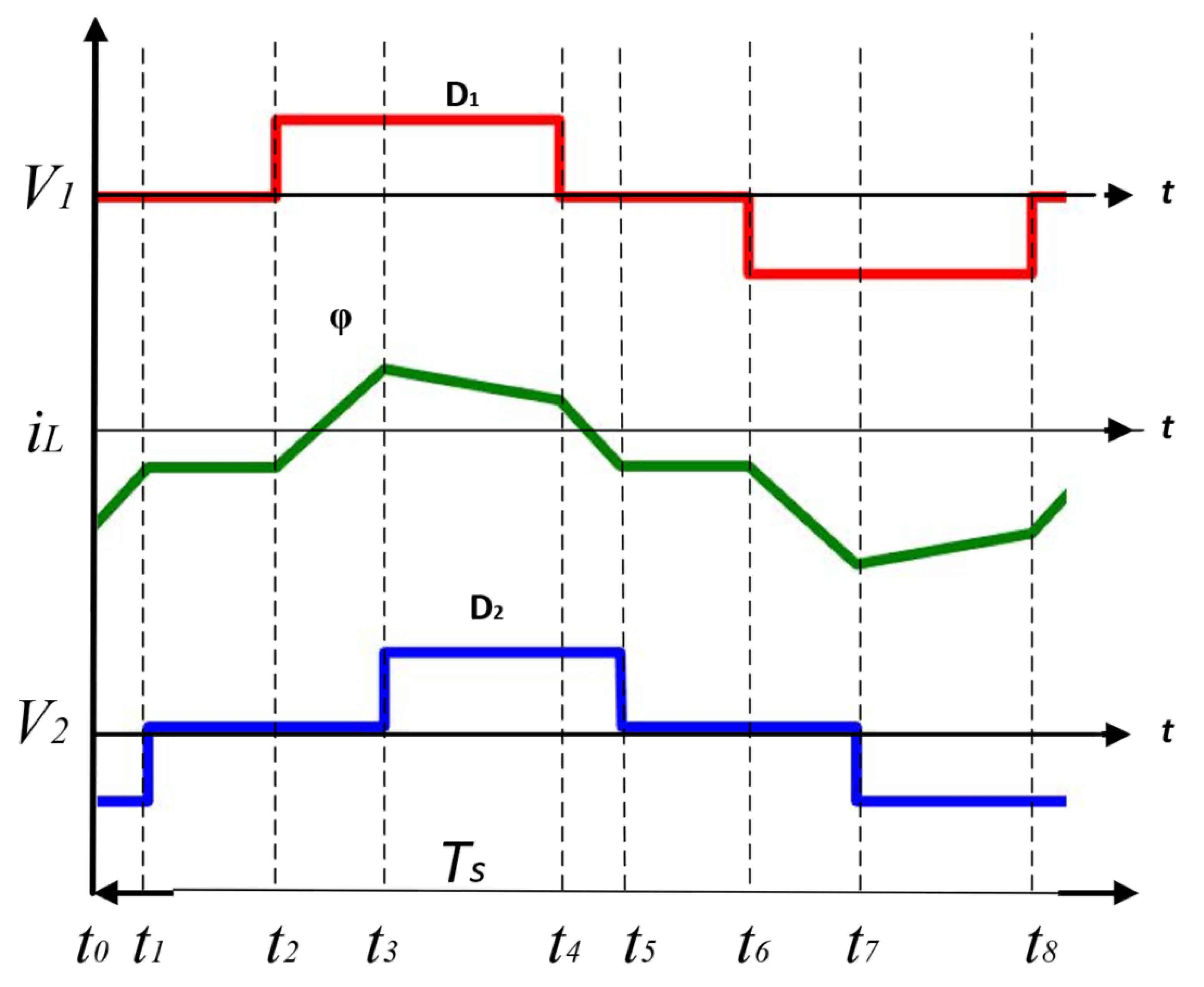


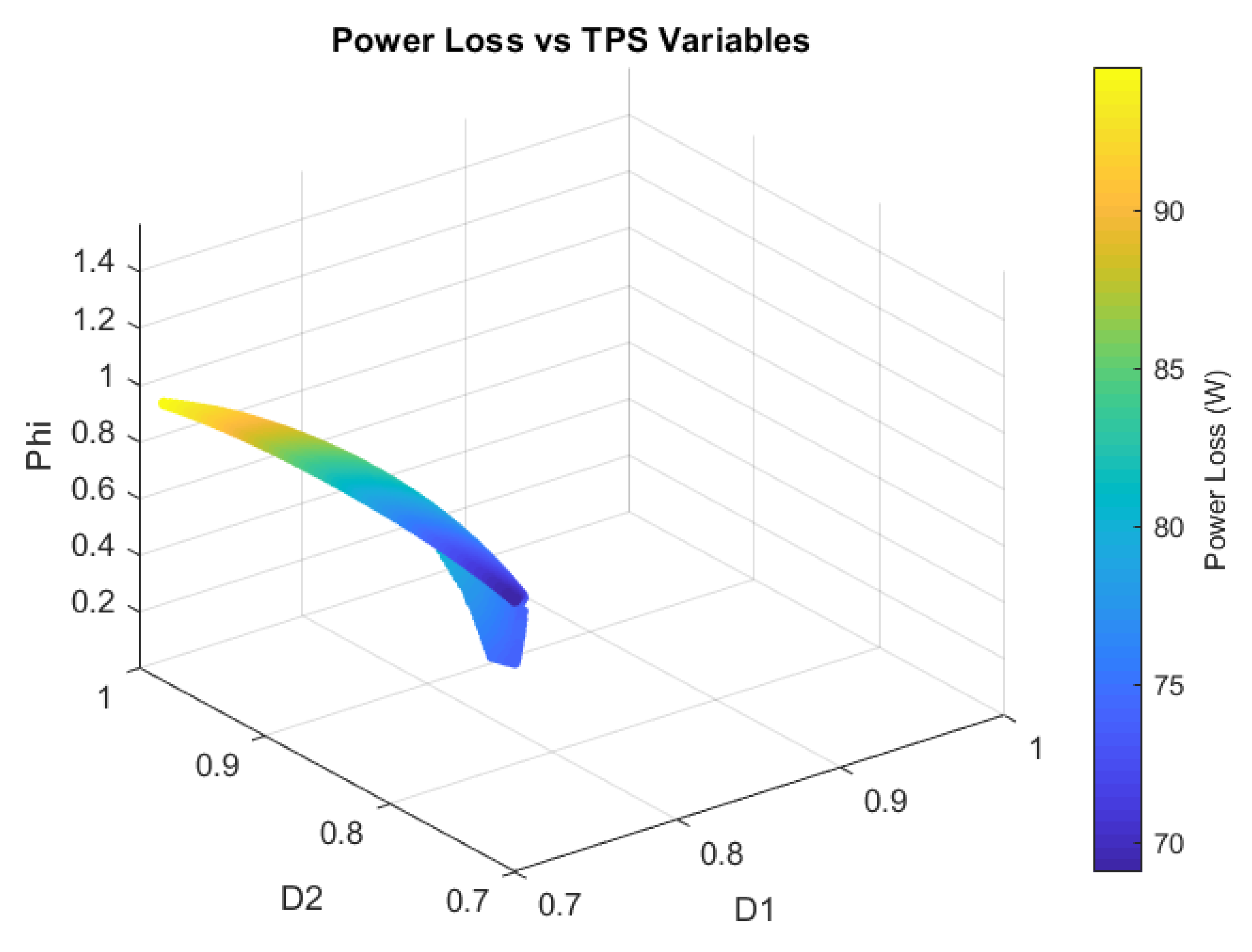



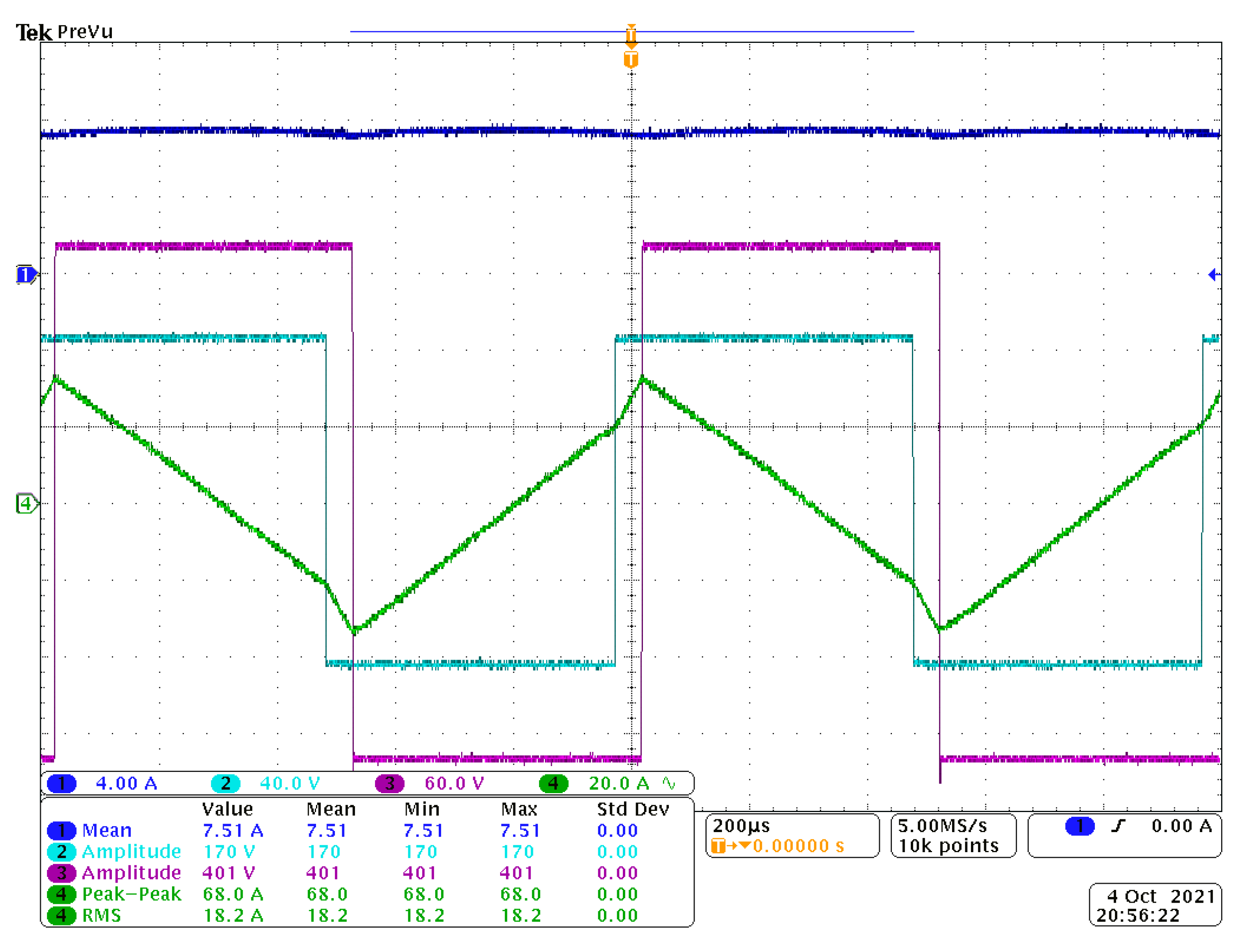
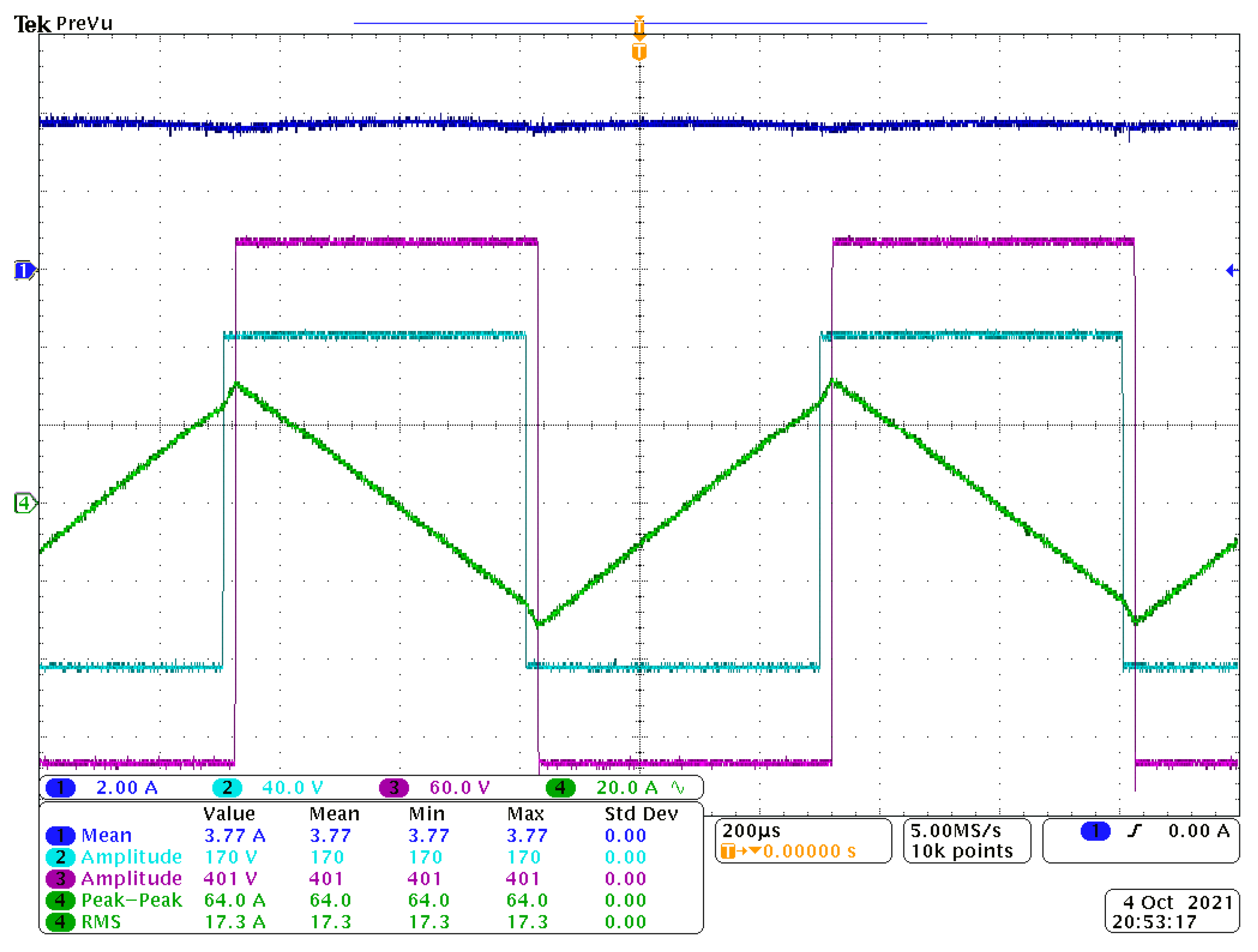

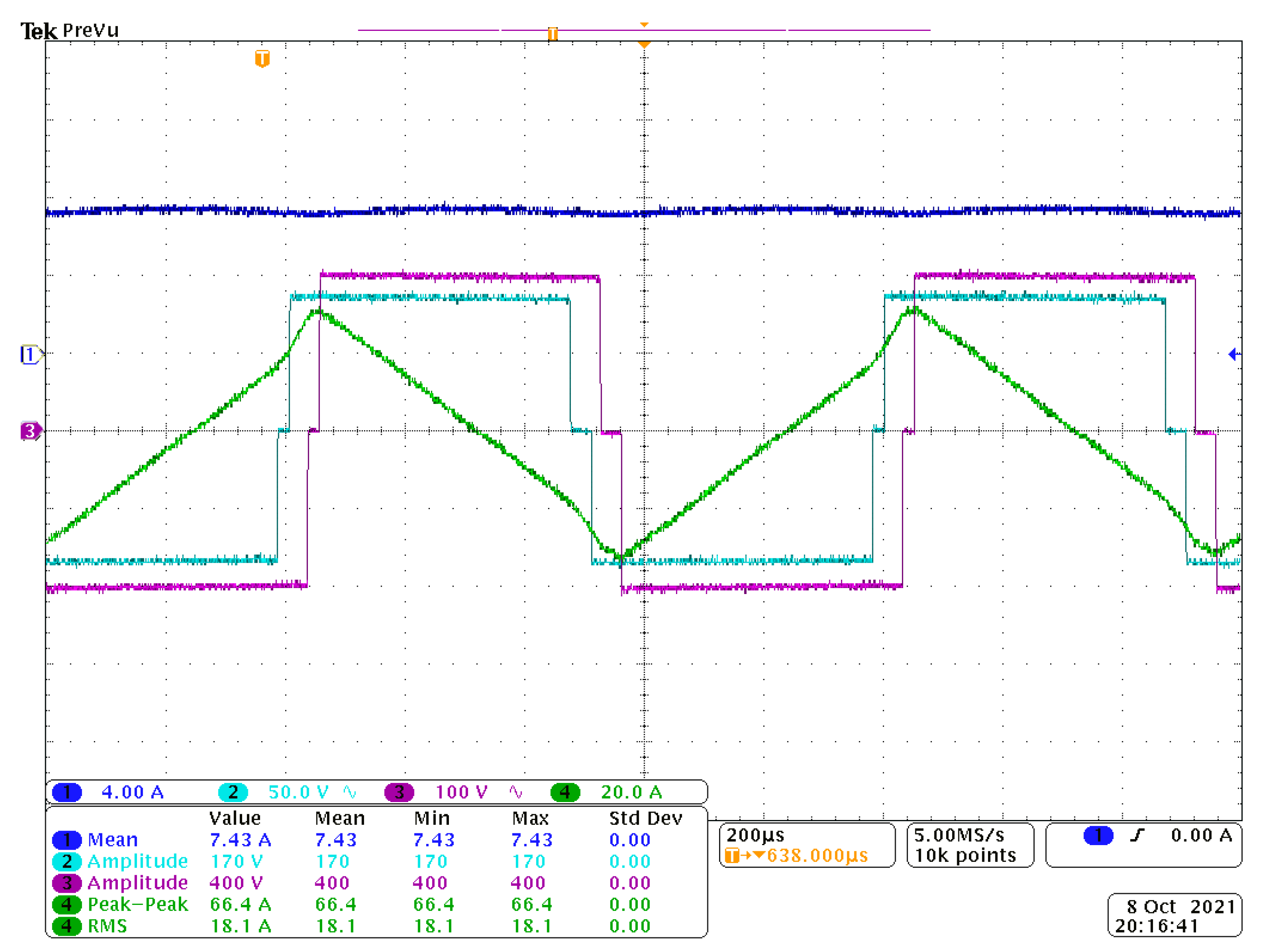

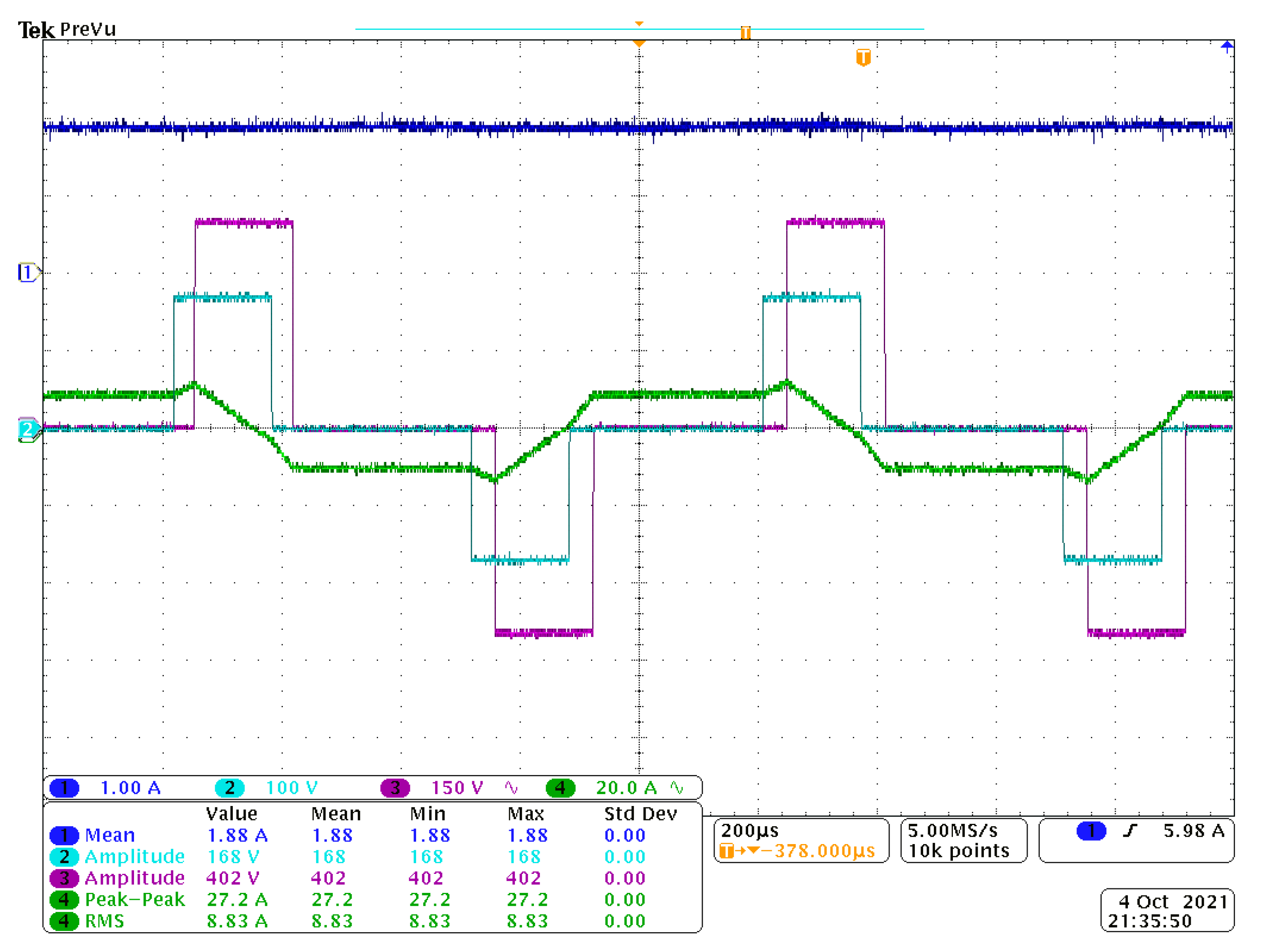
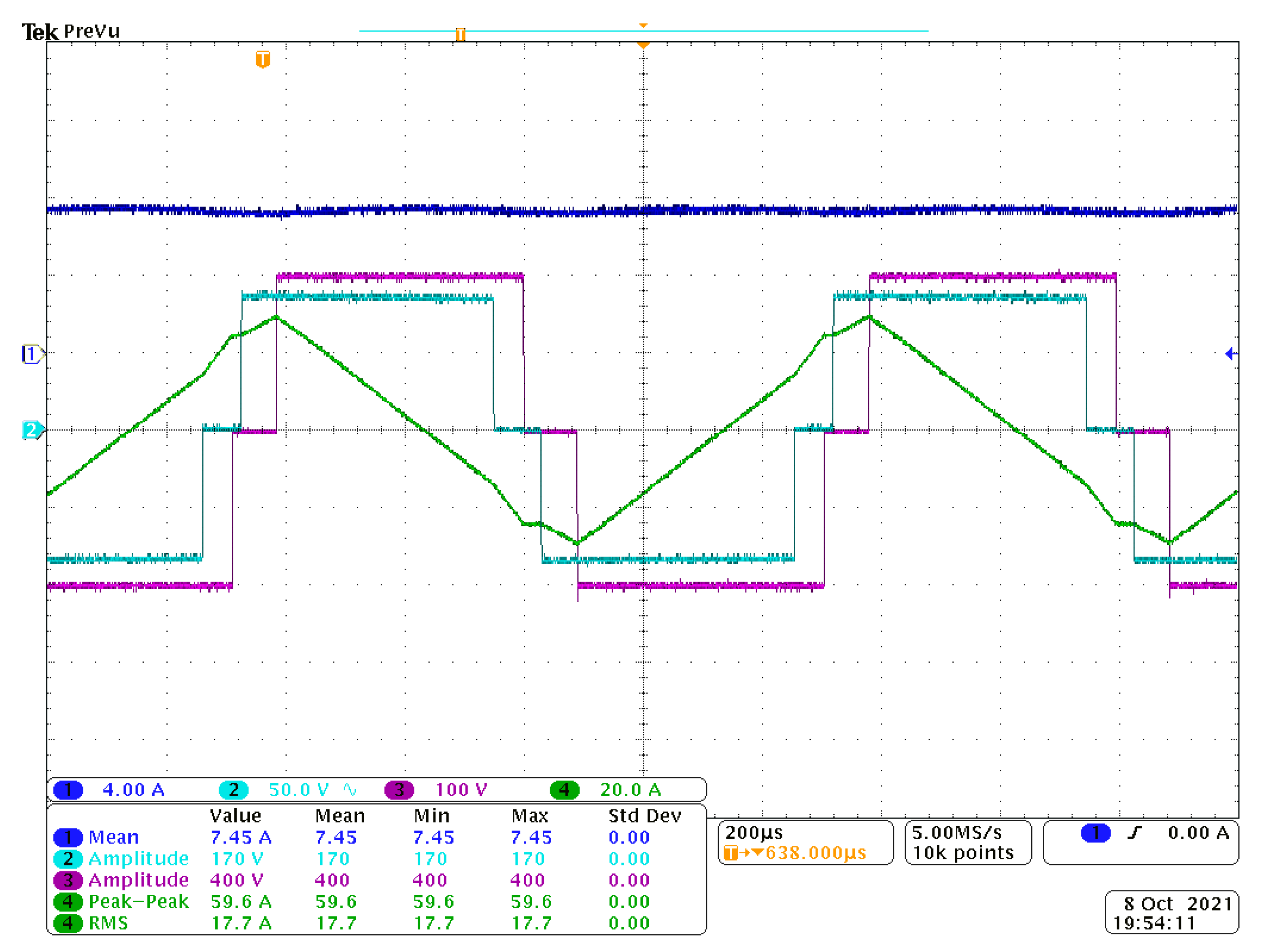
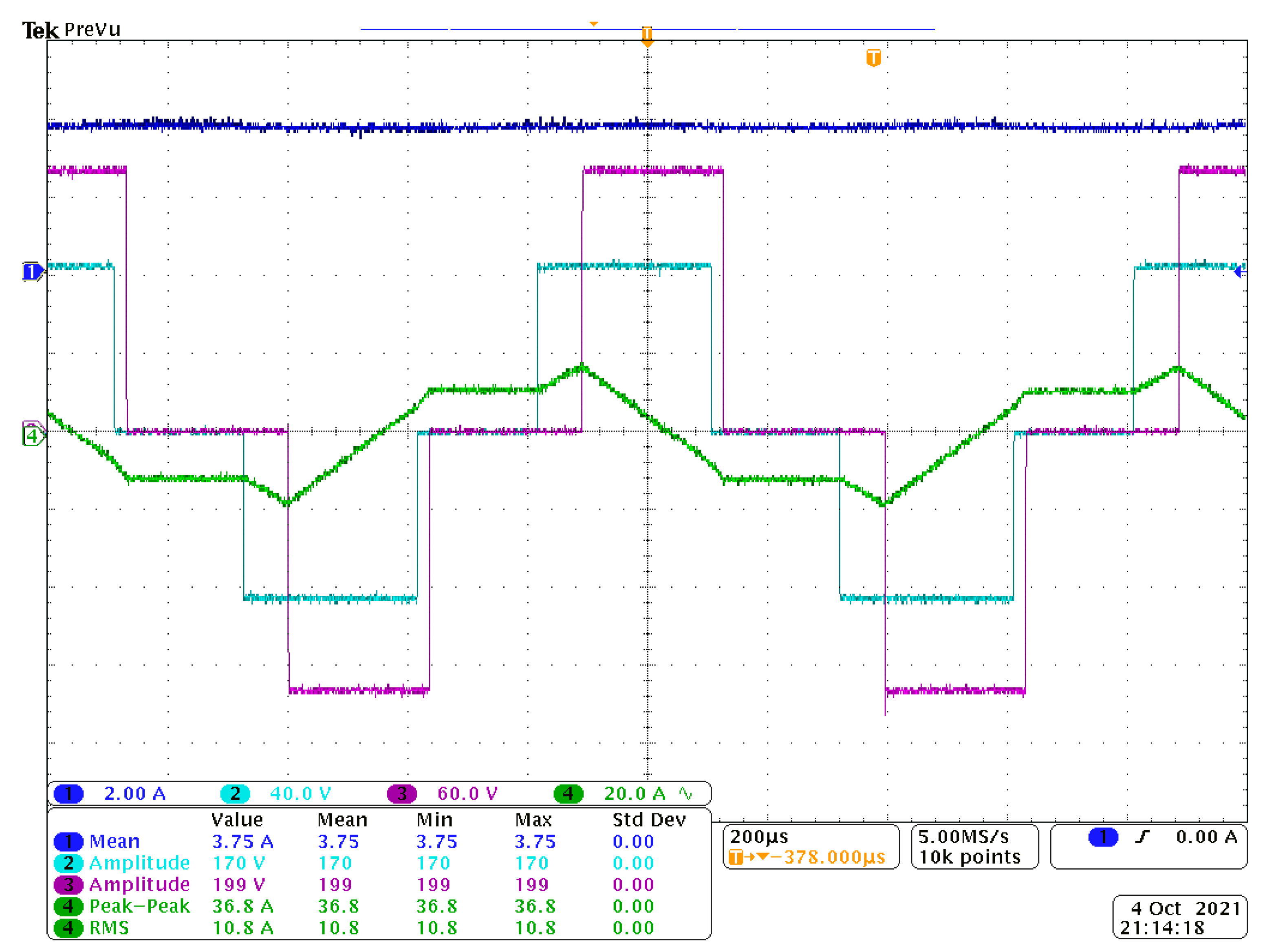
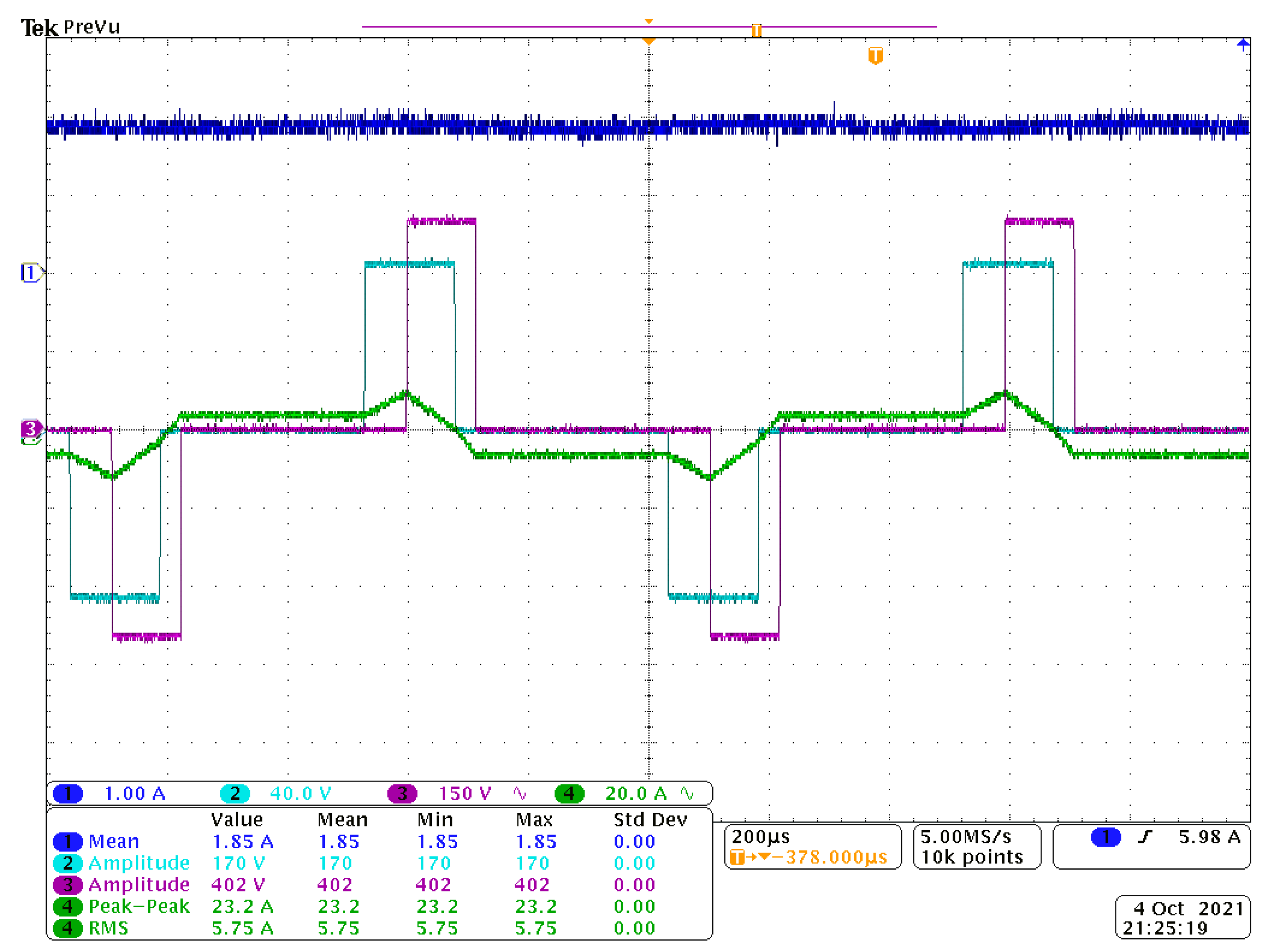
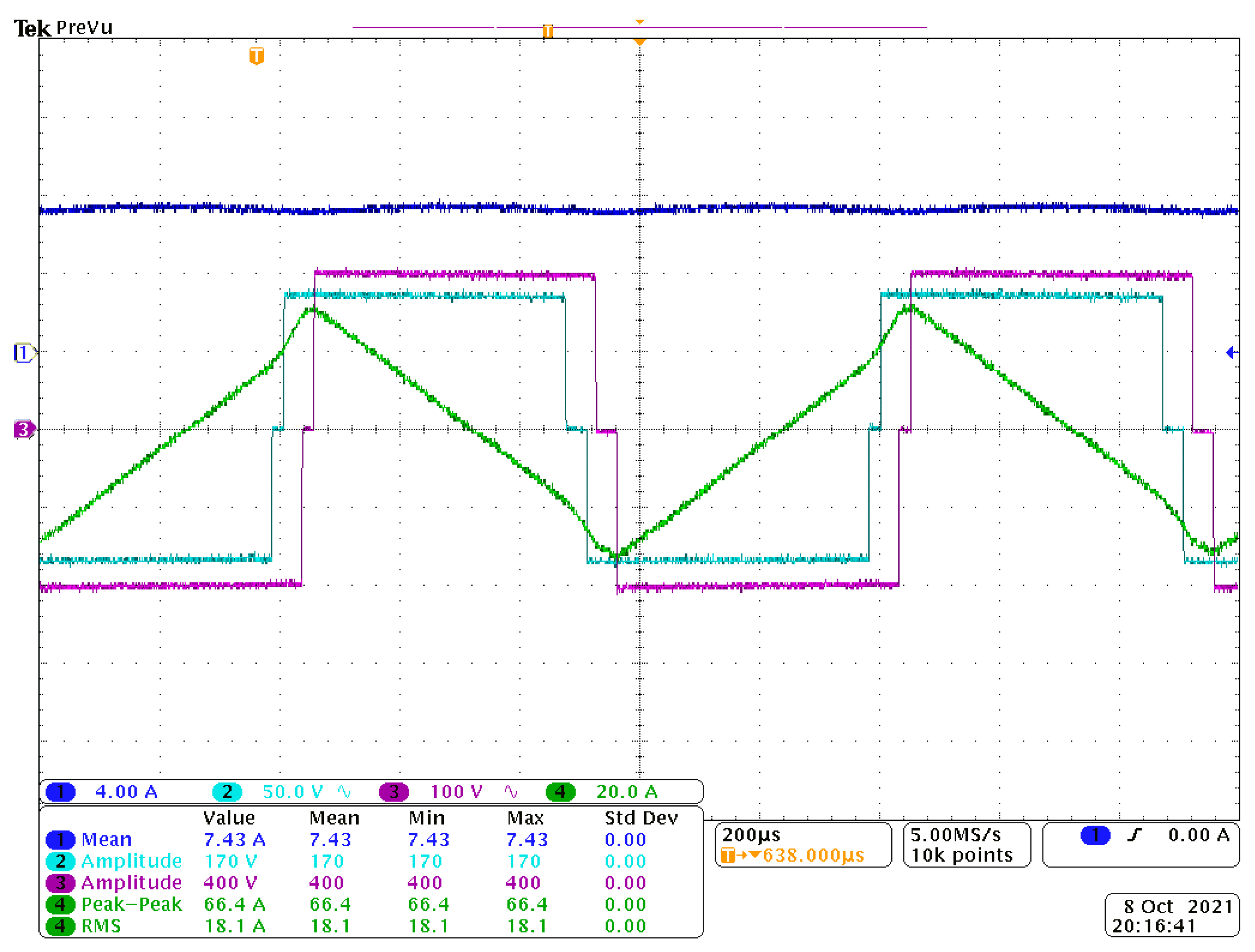


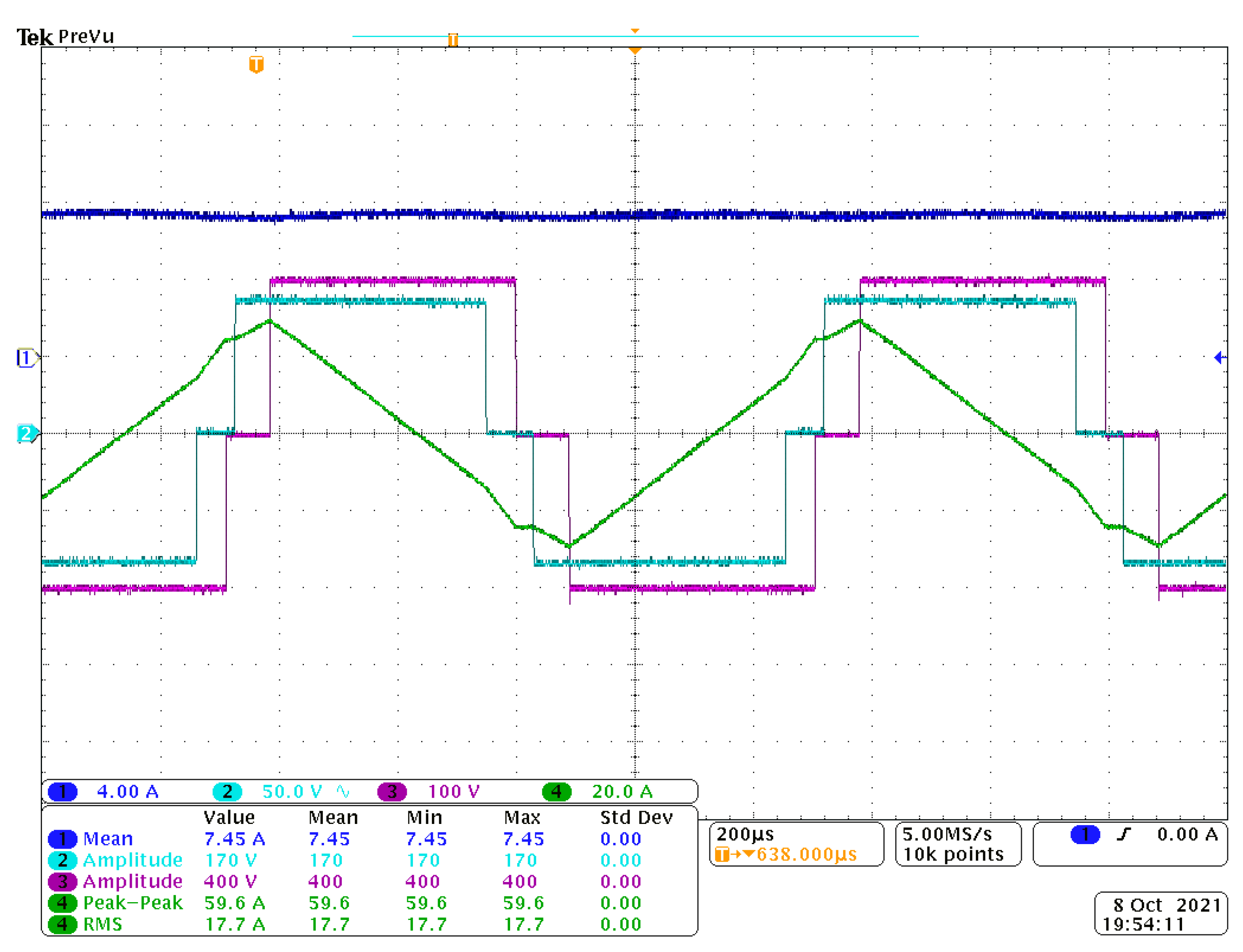

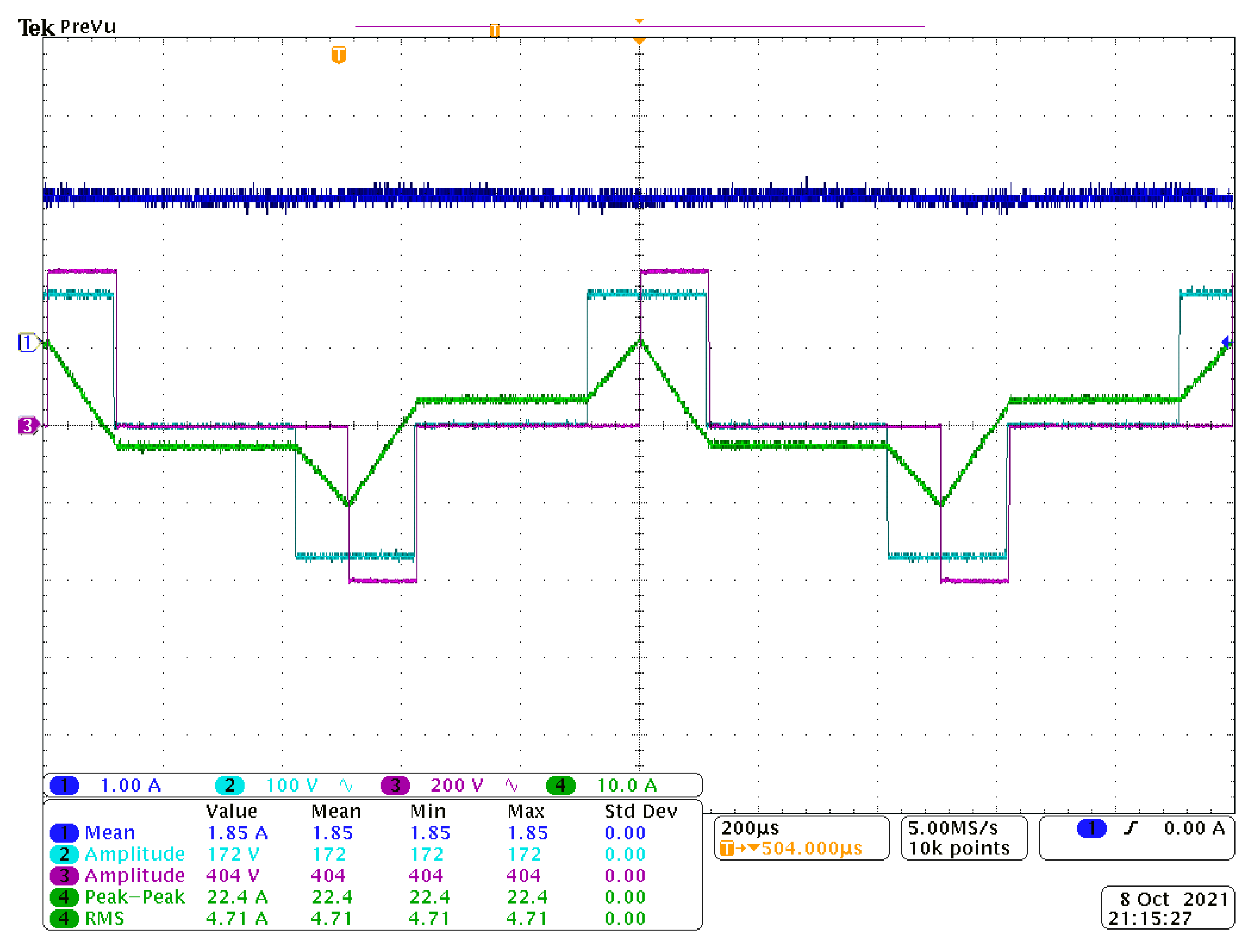
| Zone-1 | Zone-2 | Zone-3 | |
|---|---|---|---|
| Objective function | Power Loss | Power Loss | Power Loss |
| Methods | PSO | PSO | LM |
| Global | - | - | √ |
| Local | √ | √ | - |
| Zone-3 | Zone-2 | Zone-1 | |
|---|---|---|---|
| Objective function | Power Loss | Power Loss | Power Loss |
| Power Level | 1 pu | 0.5 pu | 0.25 pu |
| SPS | 68.8 A | 64.0A | 63.2 A |
| DPS | 66.4 A | 40.0 A | 24.8 A |
| TPS | 59.6 A | 35.2 A | 22.4 A |
| SPS | 18.2 A | 17.3 A | 17.2 A |
| DPS | 18.1 A | 13.0 A | 7.61 A |
| TPS | 17.7 A | 9.31 A | 4.71 A |
| Zone-3 | Zone-2 | Zone-1 | |
|---|---|---|---|
| Objective function | Power Loss | Power Loss | Power Loss |
| Power Level | 1 pu | 0.5 pu | 0.25 pu |
| SPS efficiency | 96.1% | 88.56% | 77.74% |
| DPS efficiency | 96.58% | 92.13% | 88.34% |
| TPS efficiency | 98.75% | 97.46% | 92.25% |
Publisher’s Note: MDPI stays neutral with regard to jurisdictional claims in published maps and institutional affiliations. |
© 2022 by the authors. Licensee MDPI, Basel, Switzerland. This article is an open access article distributed under the terms and conditions of the Creative Commons Attribution (CC BY) license (https://creativecommons.org/licenses/by/4.0/).
Share and Cite
Jean-Pierre, G.; Altin, N.; El Shafei, A.; Nasiri, A. Overall Efficiency Improvement of a Dual Active Bridge Converter Based on Triple Phase-Shift Control. Energies 2022, 15, 6933. https://doi.org/10.3390/en15196933
Jean-Pierre G, Altin N, El Shafei A, Nasiri A. Overall Efficiency Improvement of a Dual Active Bridge Converter Based on Triple Phase-Shift Control. Energies. 2022; 15(19):6933. https://doi.org/10.3390/en15196933
Chicago/Turabian StyleJean-Pierre, Garry, Necmi Altin, Ahmad El Shafei, and Adel Nasiri. 2022. "Overall Efficiency Improvement of a Dual Active Bridge Converter Based on Triple Phase-Shift Control" Energies 15, no. 19: 6933. https://doi.org/10.3390/en15196933
APA StyleJean-Pierre, G., Altin, N., El Shafei, A., & Nasiri, A. (2022). Overall Efficiency Improvement of a Dual Active Bridge Converter Based on Triple Phase-Shift Control. Energies, 15(19), 6933. https://doi.org/10.3390/en15196933








